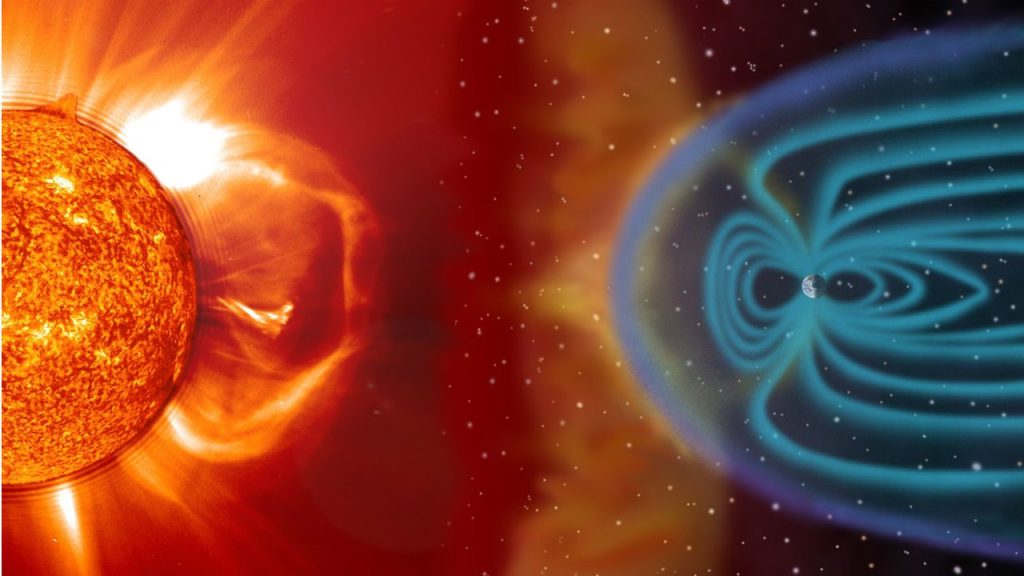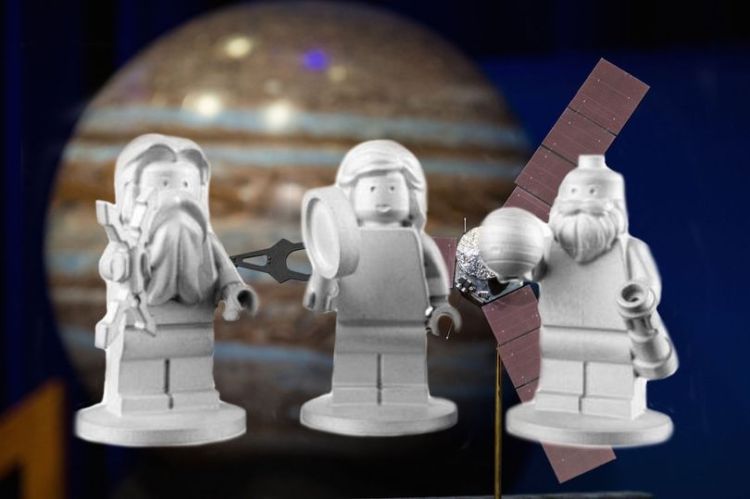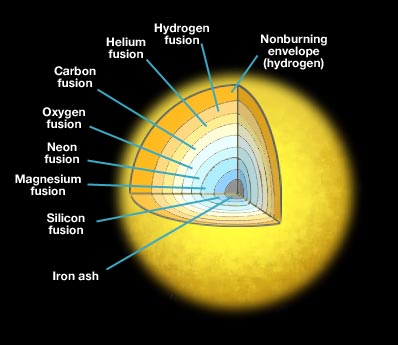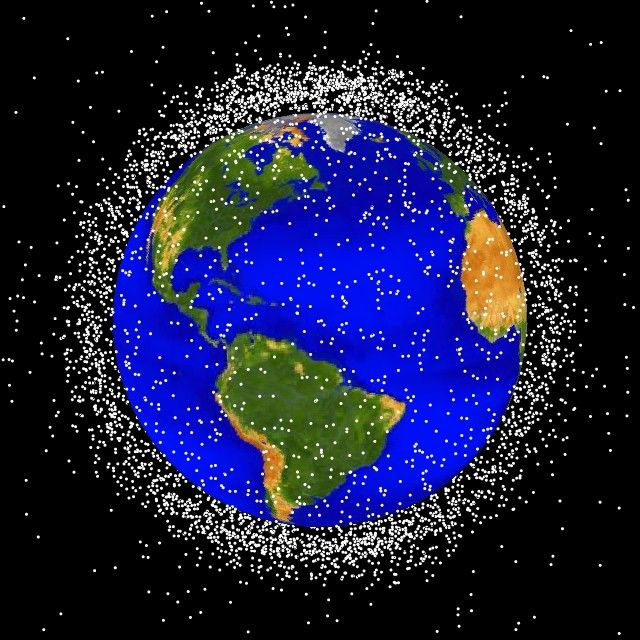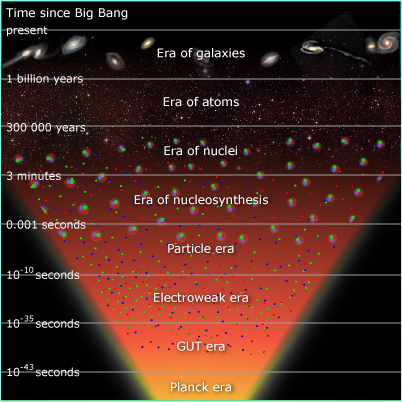
The Big Bang. It was big and definitely was a bang, but many think that this event just happened and here we are in the same universe billions of years later. In reality, the Universe has been evolving, rapidly at first slowing over time, and it continues to evolve today.
The first stage of evolution was the Planck Era which lasted for about 10-43 seconds. There isn’t a theory sufficient enough to describe this time, but we know that the temperatures were extremely high and predict that there was a single, combined force that ruled over nature. Eventually, the temperature dropped allowing for one force, gravity, to separate from the combined forces which lead to the GUT Era (named after the grand unified theories). In this time, gravity and the other combined force (strong, weak, and electromagnetic) operated in nature. Again, there are many theories about this era as well, but we predict it ended when the strong and electromagnetic forces separated as the temperature continued to fall. It is also predicted that in this time, there was a great expansion of the Universe from an atomic nucleus size to that of a solar system.
After these two stages, there was the Electroweak Era where gravity, strong, and “electroweak” (electromagnetic and weak forces were still combined) forces were coexisting in the Universe. Eventually, the Universe cooled even more to about 1015 Kelvin which allowed the electromagnetic and weak forces to separate. This era is the first that we have direct evidence of what actually happened. Everything before was theorized with no direct evidence. Following the Electroweak Era was the Particle Era. During this time, very small objects called quarks, antiquarks, electrons, positrons, particles, and antiparticles participated in matter-antimatter collisions swapping masses. As the temperature continued to drop, these collisions slowed and matter, not antimatter, ended up being the winner of the battles since if there were an equal number of matter and antimatter, there wouldn’t be anything in the Universe.
At this point, the Universe is only 0.001 seconds old. The temperatures are still extremely high so fusion is occurring between protons and neutrons to form nuclei, but gamma rays are destroying them at the same time. This stage is known as the Era of Nucleosynthesis. As this went on, the temperature of the Universe was still decreasing and fusion eventually stopped leaving a hydrogen-abundant (75%) Universe with a significant amount of helium (~24.9999%). A smooth transition into the Era of Nuclei consisted of free-floating nuclei without electrons for about 380,000 years. After all of this time, the Universe had cooled enough to where these nuclei could finally capture and keep electrons and photons were able to travel across the Universe.
With fully-formed nuclei, the Era of Atoms began. The Universe was full of neutral atoms and gravity being the force that it is drew free-floating atoms to denser parts of the Universe. As time progressed, these turned into protogalactic clouds, or baby galaxies. About 600,000 years later when the Universe had reached its one-billion-year mark, the first galaxies appeared marking the beginning of the Era of Galaxies. Stars began to form over the billions of years and the Universe came to evolve to more of what we see today.
The Universe has come a long way to be in the Era of Galaxies and the truth is that it will continue evolve as it continues to expand. How? In truth, we do not know and will probably not be around long enough to see any changes, but that doesn’t mean we can’t imagine.

